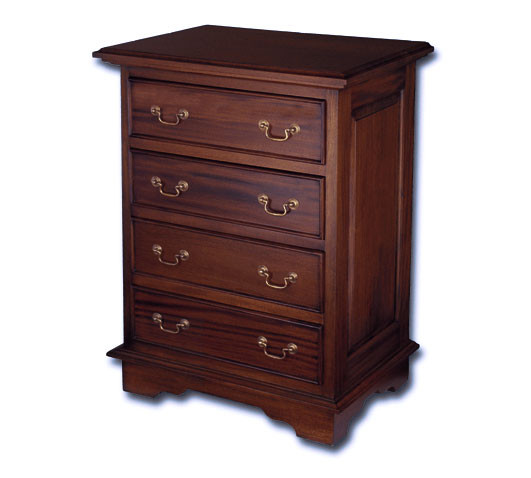- Home
- Learn About Antique Furniture and Reproductions
- Resources
- How to Clean Your Reproduction Furniture
How to Clean Your Reproduction Furniture

Congratulations on your newest piece of reproduction furniture. You no doubt placed much thought, care, and effort into choosing the exact piece to bring a room or your home, together in a theme and individual style that is simply perfect for you as well as your family.
As with any home, dust occurs. If your new piece of furniture, for example, is the Regency Dining table you have been dreaming about for entertaining family and dinner guests, accidental spills or occasional water rings may be something you have already encountered—or perhaps these are things you are considering how to prevent happening.
Wondering how to clean and care for your reproduction furniture? What works best, or what to avoid, or how to keep it in the beautiful condition you received it in? Are you new to owning mahogany reproduction furniture and unsure how to keep it spotless? All of these are valid questions and important to maintaining the vibrancy, life, and gorgeous patina of your beloved reproduction furniture pieces. To help you preserve your exquisite new décor, we have gathered our top furniture cleaning tips to guide you.
Environment
The first step in preserving your newest piece is to contemplate the environment in which you have or will be placing them. While mahogany wood is truly a fantastic marvel, too much of anything can begin to affect your furniture quality.
Temperature – Attempt to place your furniture in a room or area of the room that you know the temperature will remain as constant as possible. Placing it directly beneath a central heating vent, for instance, may cause large fluctuations in heat which may cause wood to dry out faster than natural. Avoid fireplaces, radiators, and other sources of higher heat if possible.
Sunlight – While natural sunlight is no doubt a boon to make any room airy and bright, direct sunlight on your new reproduction furniture can cause the finish to fade. Even painted or varnished, your furniture can still be damaged by harmful UV rays in sunlight. It is best to attempt to position your furniture in a manner as to avoid direct sunlight.
How to Clean Your Reproduction Furniture
If you are not clear as to what finish, stain, wood, or sealant—such as varnish or gloss that has been used to seal your reproduction furniture, it is always best to err on the side of caution first than accidentally use a cleanser that will damage.
A reputable reproduction company should include instructions on what stain, finish, or sealant (if any) has been used to create your piece of furniture, however, if they did not, start with these steps. Always do these steps one at a time if unsure, as this will give you time to observe your furniture's reaction to being cleaned.
Supplies:
- Cotton balls
- Mild dishwashing detergent
- Sponge
- Bucket
- Clean, undyed, soft cloths
Simple Cleaning
- To begin this process, it is important to test how your furniture will react to the detergent you may use. To do so, dampen a cotton ball, using a small drop of the detergent. Then, choose a place on your furniture which is not visible and wipe the cotton ball on some inside part of it, like the inside of a leg. Next, wait and observe. If you notice that the detergent mars the finish in your test area in any way, do not use this detergent. Continue the next steps without any soap. If the area does not display any evidence of damage, it is safe to use the detergent or soap.
- Mix water and soap in a small bucket. Using your sponge, dip it into the water and then wring it out until it is only damp. It is very important not to use too much water and to not soak your wooden furniture. Using too much water is a common mistake and can harm your reproduction furniture. Brush the sponge lightly over the surface and do not let any water sit. Use a soft, clean cloth to immediately dry after.
Prevent future damage
If you are satisfied with either the water cleaning, make sure to protect your reproduction furniture from future damage by using a protective wood-safe wax applied in the direction of the grain.
Now that you know how to clean your reproduction furniture, you are prepared and ready to enjoy the countless years of beauty and charm your furniture will no doubt bring to your home and family for years to come.









